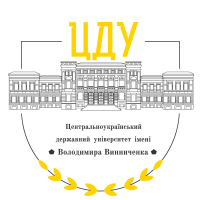PECULIARITIES OF TRANSLATION OF ENGLISH LANGUAGE INSTRUCTIONS WITH THE USE OF ADDITIONAL TOOLS IN SDL TRADOS STUDIO AND MEMOQ TRANSLATOR PRO ENVIRONMENTS
Keywords:
computer-assisted translation; computer-assisted translation tool; project management; translation memory; SDL Trados Studio; MemoQ Translator Pro.Abstract
The presented research focuses upon the analysis of additional specific tools (namely translation memory (TM) technologies) of SDL Trados Studio 2017 and MemoQ Translator Pro 2017 automated translation systems and their application for translation of English-language instructions into Ukrainian. With the help of the above-mentioned software tools 60 English-language operating instructions for household appliances have been translated into Ukrainian (three projects were created in both systems, each containing 10 instructions). TM is a database consisting of segments of source text (sentences, paragraphs, headings, etc.) and translations of each of these segments. TM, used in both SDL Trados Studio and MemoQ Translator Pro systems, significantly improves the quality, speed, consistency and efficiency of each translation task. SDL Trados Studio 2017 and MemoQ Translator Pro 2017 compare content of the current segment of the source file with segments of the same language already contained in the TM. If the system finds a similar segment that is currently stored in the TM, it prompts the translator to use a ready-made translation. The degree of equivalence between the segment of the source document and the segment contained in the TM is expressed as a percentage. Thus, both software tools capture the cases of «Exact match», «Perfect match» and «Fuzzy match». SDL Trados Studio 2017 and MemoQ Translator Pro 2017 slightly differ in segment statuses and colour segment marking. Both systems do not make adjustments automatically, but their identification and navigation capabilities allow one to quickly correct such errors by hand. Unfortunately, the initial focus on the Russian-language market (and, consequently, on the Russian language system) has led to another peculiarity of automated translation into Ukrainian in SDL Trados Studio and MemoQ Translator Pro systems, namely a large number of stylistic errors that require quality personalized correction.
References
Баймуратов У. С. Электронный инструментарий переводчика. Оренбург: ОГУ, 2013. – 140 с.
Звєрєва Н. С. Актуальность использования автоматизированных систем перевода // Вестник Российского университета дружбы народов. Серия: Вопросы образования: языки и специальность. 2008. № 2. – С. 1–4.
Міщенко А. Л. Комп’ютеризовані інструменти перекладача фахової літератури // Наук. зап. Кіровогр. держ. пед. ун-ту ім. В. Винниченка. Вип. 89 (1). Серія: Філол. науки (мовознавство). Кіровоград : РВВ КДПУ ім. В. Винниченка, 2010.– С. 190–198.
Garcia I.: Computer-aided translation. // The Routledge Encyclopedia of Translation Technology. London: Routledge, 2014. – P. 68–87.
Keller N. Neun Translation-Memory-Systeme im Praxiseinsatz Heidelberg: Universität Heidelberg, 2011. – 91 p.
Plitt M., Masselot F.: A productivity test of statistical machine translation: postediting in a typical localisation context // The Prague Bulletin of Mathematical Linguistics. 2010. № 93. – P. 7−16.
Schjoldager, A., Christensen, T.: Computer-aided translation tools // The Journal of Specialised Translation. 2016. № 25. – Р. 89–105.








